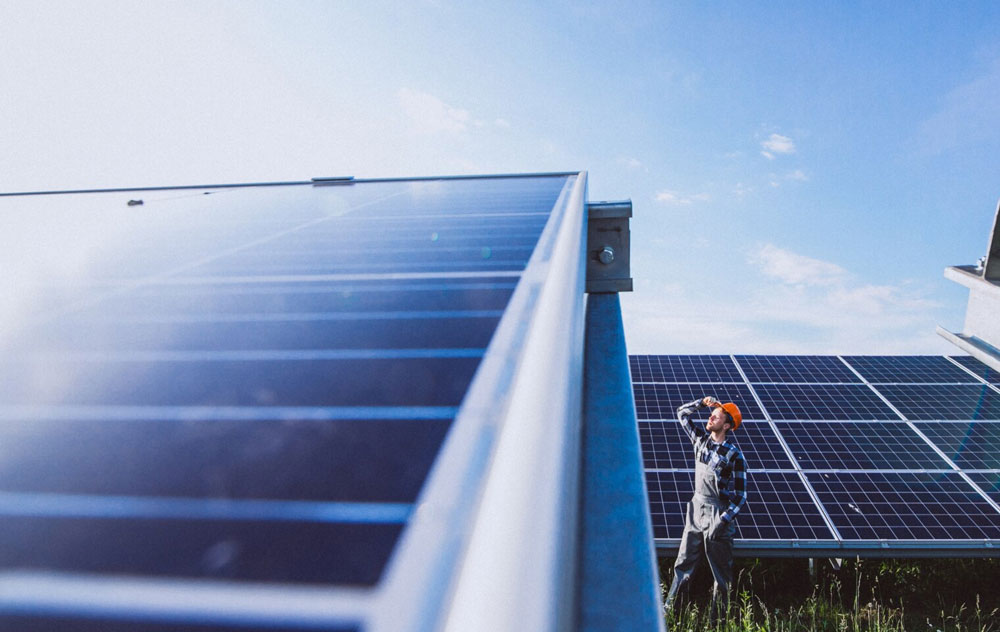
In an era where sustainability is more critical than ever, solar power has emerged as a beacon of hope, offering a clean, renewable alternative to fossil fuels. The adoption of solar energy is not just a trend but a necessity for a sustainable future. This article delves into the intricacies of solar power systems, exploring their components, benefits, and the steps involved in setting up a solar energy system for your home or business.
Understanding Solar Power Systems
Solar power systems convert sunlight into electricity using photovoltaic (PV) panels. These panels consist of many solar cells made from semiconductor materials, such as silicon. When sunlight strikes the solar cells, it creates an electric field across the layers, generating direct current (DC) electricity. This DC electricity is then converted into alternating current (AC) electricity using an inverter, making it usable for household appliances and the electrical grid.
Components of a Solar Power System
- Solar Panels: The most recognizable part of a solar power system, solar panels are composed of multiple solar cells. They capture sunlight and convert it into electricity. Panels vary in efficiency and size, so choosing the right type depends on your energy needs and available space.
- Inverter: The inverter is crucial for converting the DC electricity generated by the solar panels into AC electricity, which is the standard form used by most household appliances and the grid. There are different types of inverters, including string inverters, microinverters, and power optimizers, each with its advantages.
- Mounting System: Solar panels need to be securely mounted on your roof or another structure. The mounting system ensures that panels are installed at the optimal angle and orientation to maximize sunlight exposure. It also must be durable enough to withstand various weather conditions.
- Battery Storage: While not always necessary, battery storage systems are becoming increasingly popular. They store excess electricity generated during the day for use during nighttime or cloudy periods, providing greater energy independence and reliability.
- Charge Controller: In systems with battery storage, a charge controller regulates the voltage and current coming from the solar panels to the batteries, preventing overcharging and ensuring the longevity of the batteries.
- Utility Meter: For grid-tied systems, a utility meter tracks the amount of electricity your solar system produces and any surplus that is sent back to the grid. This meter is essential for calculating credits or payments from utility companies in net metering agreements.
Benefits of Solar Power Systems
- Environmental Impact: Solar power is a clean energy source that reduces greenhouse gas emissions and reliance on fossil fuels. By harnessing sunlight, solar energy helps combat climate change and lowers your carbon footprint.
- Cost Savings: While the initial investment in solar panels and associated equipment can be substantial, the long-term savings are significant. Solar energy reduces or eliminates your electricity bills, and many regions offer incentives or tax credits that can offset installation costs.
- Energy Independence: Solar power allows you to generate your own electricity, reducing dependence on external energy sources. This is particularly beneficial in areas with unreliable power grids or frequent outages.
- Increased Property Value: Homes and businesses with solar installations often see an increase in property value. Potential buyers are attracted to the prospect of lower energy costs and the environmental benefits of solar energy.
Steps to Setting Up a Solar Power System
- Assessment and Planning: Begin by assessing your energy needs and evaluating your property’s suitability for solar panels. Consider factors such as roof orientation, shading, and available space. Consulting with a professional solar installer can help determine the best system size and configuration.
- Choosing Equipment: Select high-quality solar panels, an appropriate inverter, and any additional components such as batteries or charge controllers. The choice of equipment will impact the efficiency and reliability of your solar system.
- Installation: Professional installation is crucial for ensuring the system is set up correctly and safely. Installers will handle the mounting of panels, wiring, inverter setup, and integration with the electrical system.
- Inspection and Activation: After installation, the system will need to be inspected by local authorities or utility companies to ensure it meets all regulations and standards. Once approved, the system can be activated and start generating electricity.
- Monitoring and Maintenance: Regular monitoring of your solar system ensures it operates efficiently. Many systems come with monitoring software that tracks energy production and performance. Routine maintenance, such as cleaning panels and checking connections, helps keep the system in optimal condition.
Conclusion
Solar power systems represent a significant advancement in energy technology, offering a sustainable and economically viable solution for reducing our reliance on nonrenewable resources. By understanding the components, benefits, and installation process of solar power systems, you can make informed decisions that contribute to a greener future while enjoying long-term savings and energy independence.
